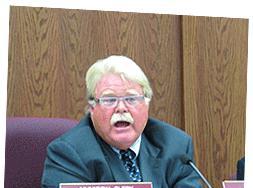Here are a list of articles, ordinances and resolutions pertaining to the Red Bank Affordable Housing Corporation and their development project known as Cedar Crossings. The town purchased the property for around 2.4 million using a NJ grant. John Curley a Republican Councilman at the time and a current Monmouth County Freeholder questioned the purchase as well as Red Bank being brought up during the Operation Bid Rig FBI investigation. At last night’s Borough Council meeting, Republican John Curley brought up the Press story, and said he had “contacted the FBI to request a full investigation of these comments.”Curley then immediately segued into a reference to the borough’s $2.45 million purchase last February of property on which the Cedar Crossings affordable housing project is to be built. Curley said he had asked the FBI to investigate that as well.“I do not believe that deal was legal,” Curley said with rising anger.
The town then sold the property to Red Bank Affordable Housing Corporationfor $1 and leading the public to believe the Red Bank Housing Authority would develop the property. From Red Bank Green Red Bank was the first town to apply for and obtain funds under the DCA’s Municipal Acquisition and Construction Program. Next: the Red Bank Housing Authority will kick into gear to oversee the construction, Menna said. he expects the agency to work with the federal Housing and Urban Development bureaucracy and others to pay for construction.
. Red Bank Affordable Housing Corporation then obtained Grant money as well as loans from Investors Savings, the NJ Mortgage and Finance Agency and the Federal Home Loan Bank of New York The loans and grants totaled $5 million to build (36) 1150sqft (on avg) townhomes to be sold at an average price of $115,000. This would have generated approximately $4.2 million in sales. The estimated cost to build was $4.4 million which would be more than $100 per square foot and this was modular construction which usually costs less than $100 sqft to build. In either case there would be somewhere between $600,000 and $800,000 extra dollars then was needed to build the affordable housing units. I know that in 2006 when the property was agreed to be purchased, we were at the top of the market, but the market in Red Bank did not drop by approximately 50% over the past 5 years. The purchase was around 2.4 million for the land and now they are assessed for $30k per unit for the land which makes the land value $1,080,000. Here are the tax records for the units.Each of the 36 units were assessed the same. Non-Profit Corporations take money out in the form of fees. Here is a copy of the DeCotiis Law Firm charging the Red Bank Affordable Housing Corporation nearly $3,000 for legal work. in 2010. During 2009 the Decotiis firm charged nearly $5,000 to Red Bank Affordable Housing Corporation. Frank Borin of the DeCotiis Law Firm is a member of the Red Bank Affordable Housing Corporation.
rb borough website for cedar crossings
rb fed home loan bank 400k grant
rb green article cedar crossing deal closes
rb green article cedar crossing plan breezes
rb green article cedar crossing work begins
Master Deed of Cedar Crossings rb iManage_1285186_1_1_
Cedar Crossing bylaws rb cedard crossing bylaws iManage_1285187_1_1_
Hub article on purchase of cedar crossing
Hub article on ground breaking at cedar crossing
William Katchen member of Red Bank Afffordable Housing Corporation
Tax information related to Red Bank Affordable Housing Corporation
Two River Times Article about approval at cedar crossings
Hub Newspaper Article on Creation of Red Bank Affordable Housing Corp
There are laws in NJ that govern the conduct of elected officials working in government.
52:13D-17. Post-employment restrictions
No State officer or employee or special State officer or employee, subsequent to the termination of his office or em-ployment in any State agency, shall represent, appear for, negotiate on behalf of, or provide information not generally available to members of the public or services to, or agree to represent, appear for, negotiate on behalf of, or provide information not generally available to members of the public or services to, whether by himself or through any partner-ship, firm or corporation in which he has an interest or through any partner, officer or employee thereof, any person or party other than the State in connection with any cause, proceeding, application or other matter with respect to which such State officer or employee or special State officer or employee shall have made any investigation, rendered any ruling, given any opinion, or been otherwise substantially and directly involved at any time during the course of his of-fice or employment.
Any person who willfully violates the provisions of this section is a disorderly person, and shall be subject to a fine not to exceed $ 1,000 or imprisonment not to exceed six months, or both.
In addition, for violations occurring after the effective date of P.L.2005, c.382, any former State officer or em-ployee or former special State officer or employee of a State agency in the Executive Branch found by the State Ethics Commission to have violated any of the provisions of this section shall be assessed a civil penalty of not less than $ 500 nor more than $ 10,000, which penalty may be collected in a summary proceeding pursuant to the “Penalty Enforcement Law of 1999,” P.L.1999, c.274 (C.2A:58-10 et seq.)
Example of Linden NJ Mayor violating ethics laws
League of Municipalities Ethic Violations
conflict land development cases





